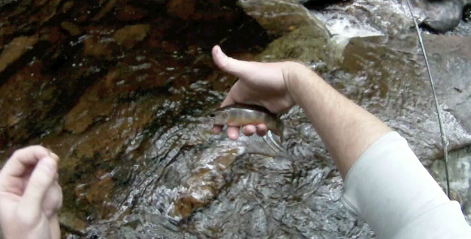The future of brook trout like this one from West Virginia is in jeopardy, but not all hope is lost.
It’s no secret that the brook trout is in trouble. It is estimated that brookies inhabit only nine percent of their former native habitat in the East, and are especially vulnerable in the Southern Appalachians due to many factors. The brook trout is not only a beautiful and lively game fish for anglers, it is an indicator of water quality as they require only the cleanest, coolest water to survive. Once prevalent in large streams, they are not relegated to headwaters high in the mountains. Luckily, there are groups like Trout Unlimited and the Eastern Brook Trout Joint Venture that are working aggressively to slow the decline of natural brook trout habitat, and they took another big step to that end at a workshop in West Virginia this past November.
Among other things, the main focus of the workshop was to establish a more acute process for monitoring brook trout populations: identifying populations per square mile, as oppose to the previous per 30 square miles. This will allow fishery managers to pinpoint more accurately where to concentrate their restoration and conservation efforts. On the flip side, the new approach and finer data will reveal just how bad the situation has gotten for these fragile fish. As the climate warms, so will the water pushing brookies further up stream and further limiting their ability to survive.
Trout Unlimited Chesapeake Bay Land Protection Coordinator Kevin Anderson lays out the whole situation in more detail in this blog post on Trout Unlimited’s website. There is also a very informative video, featuring an impressive W.Va. brookie embedded below.
If you are a small stream, brook trout enthusiasts, please take a moment to read through Anderson’s post and consider joining the efforts to preserve the habitat of the East’s only native trout before it’s too late.
From the Field: Linking land and water in brook trout conservation from Chesapeake Bay Program on Vimeo.








